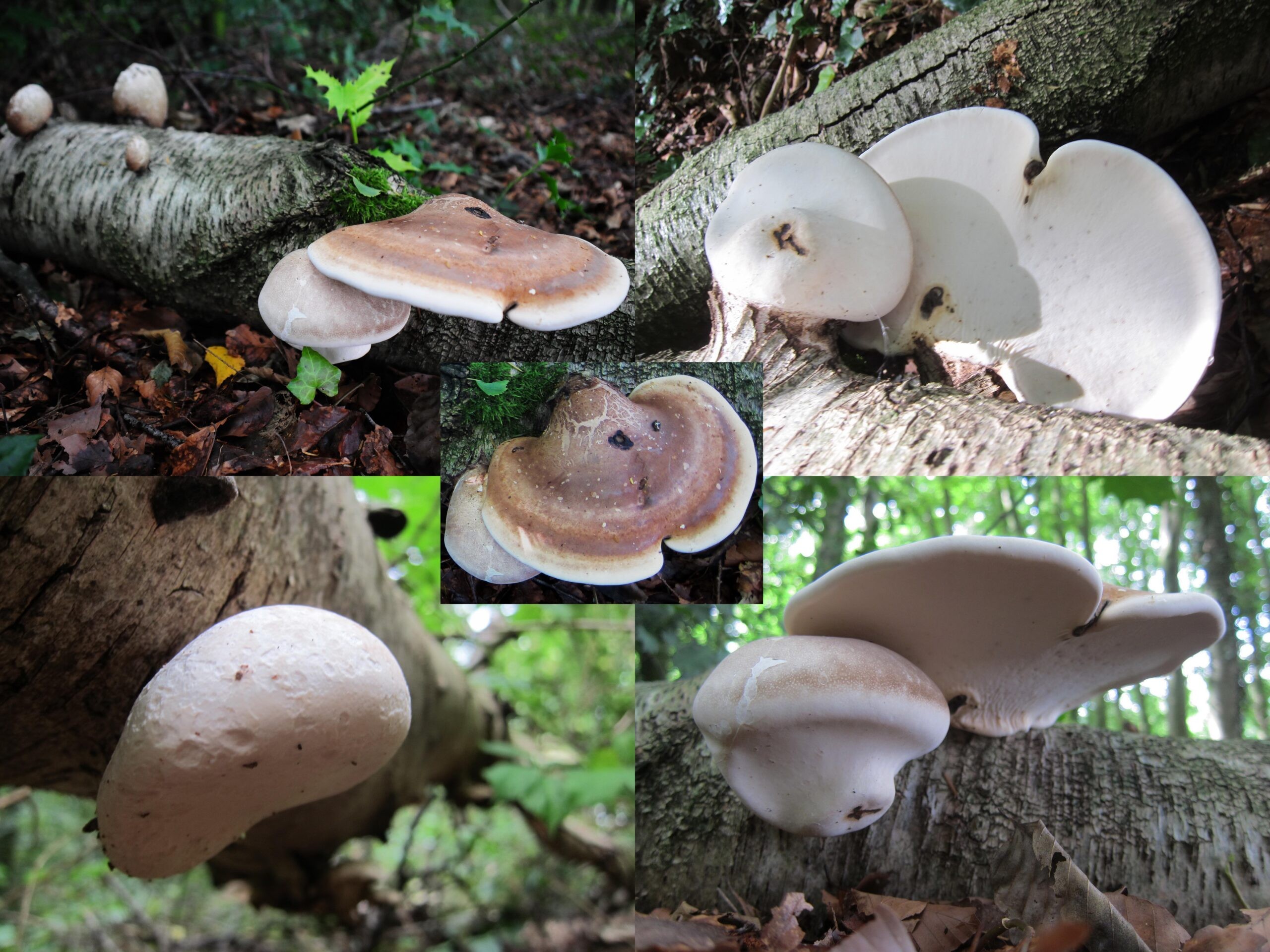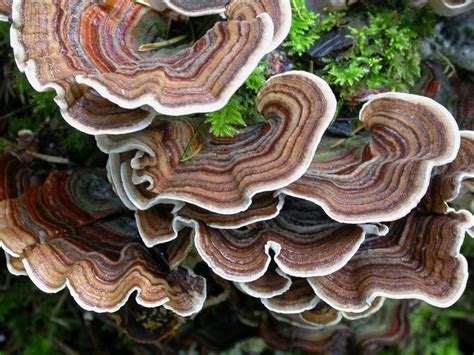Mushrooms? Well, we often refer to these supplements as ‘medicinal mushrooms’. The trippy kind? Nope! Even though medicinal mushrooms have gained popularity, you may still get strange looks when you mention consuming fungus in the context of supplementation. Many mushrooms can be considered tonic herbs – meaning they can be consumed over a long period of time to support overall wellbeing.
Humans have been using mushrooms a long time. For instance, the 5300 year old frost-mummy Ötzi, also called the ‘Iceman’, found in 1991 was carrying birch polypore mushrooms with him! (2) Many mushrooms are extremely well researched, and more research keeps coming out to confirm the wonderful benefits of including them in your routine. The following are some more well-known medicinal mushrooms that can be found in Michigan.
Birch Polypore (Piptoporus betulinus)
Birch polypore, as the name denotes, grows on birch trees and are found throughout Michigan. Though this is a very common polypore, its benefits are nothing to shake a stick at. Birch Polypore has been found to have the following actions: antitumor, antibacterial, anti-inflammatory, antiseptic, antiviral, laxative. (2) It has also been found to have immune enhancing benefits. (9) Birch Polypore is included in the Host Defense MyCommunity and MycoShield products.
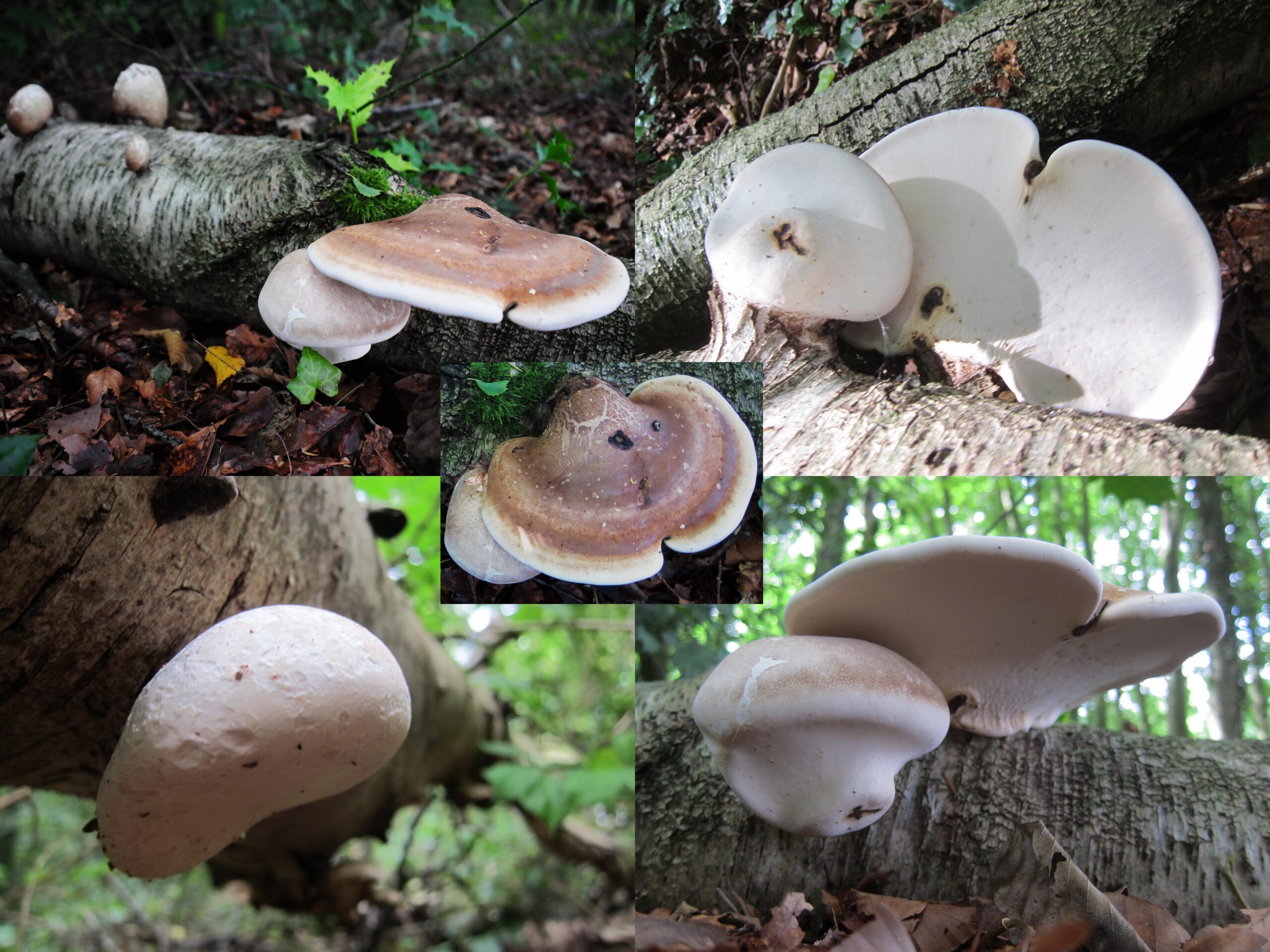
BIRCH POLYPORE Photo by Henk Monster retrieved from URL under CC BY 3.0
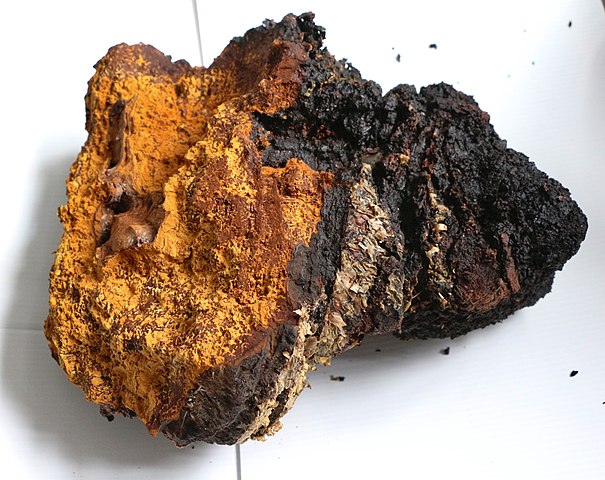
CHAGA Photo by JBouchez retrieved from URL under CC BY 4.0
Chaga (Inonotus obliquus)
Chaga grows more prolifically in more northern, boreal forests such at the Upper Peninsula of Michigan, but grows throughout temperate forests of the Northern Hemisphere. The preferred chaga grows on birch trees, though it has been seen growing on other types of trees. The outer appearance of chaga is gnarled and black while the inside of the fungus is bright orange.
Studies show that chaga may be effective in preventing and fighting cancer, lowering cholesterol, prevent oxidative stress, lowering blood pressure and blood sugar, supporting the immune system, and fighting inflammation. (1) In Russian Folk Medicine and Traditional Chinese Medicine Chaga is used as a tonic for overall health. (5)
Fungi Perfecti Chaga Mycelium is labeled for Antioxidant and DNA support. It is featured in Breathe, Energy, Liver, MyCommunity, MycoShield, and Stamets 7. It is also available on its own.
Note: Both Chaga and Birch Polypore absorb compounds from the birch. Birch itself has some medicinal properties, but the mushrooms can be thought of as a concentrated source of beneficial compounds.
Lion’s Mane (Hericium)
Hericium species can be found throughout Michigan, including the often utilized and studied Hericium erinaceus. (8) Lion’s Mane shows great promise in being able to treat neurodegenerative disorders such as Alzheimer’s and Parkison’s. It has anti-inflammatory properties, promotes nerve growth factor gene expression, and promotes neurite outgrowth (which occurs during nerve development and regeneration). Hericenones and erinacines, both components that can be isolated from Lion’s Mane, show neuroprotective properties. (10)
Traditionally Lion’s Mane was used in China and Japan to strengthen the spleen, nourish the gut and for anticancer properities. (10)
Host Defense Lion’s Mane is labeled for Memory and Nerve Support. It is also featured in Brain, MyCommunity, Stamet’s 7 and Stress Decompress. It is available on its own as well.
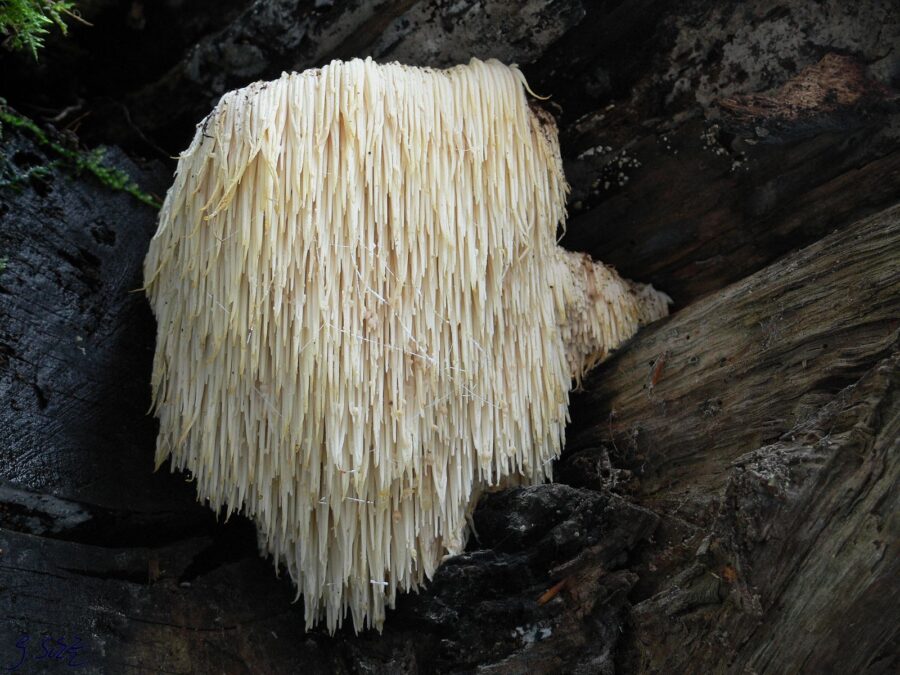
LION'S MANE: Photo by Lebrac under CC by 3.0 Retrieved from URL.
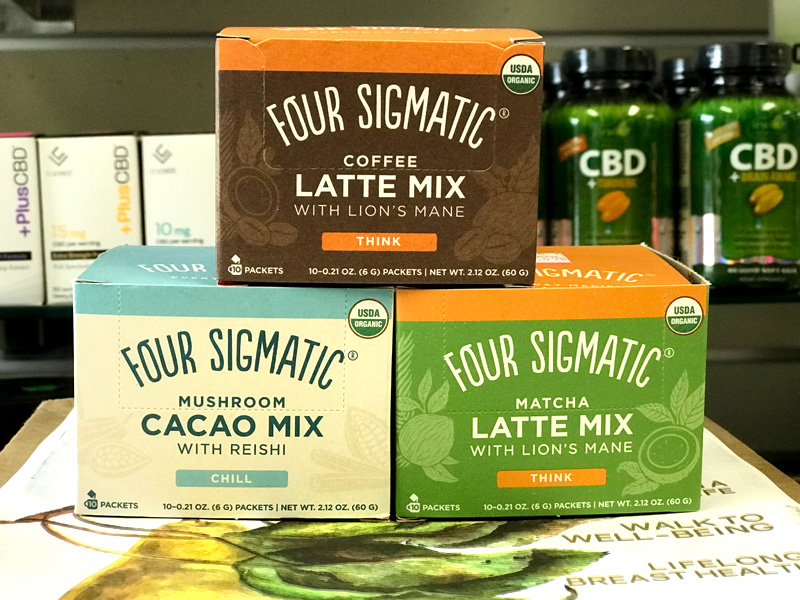
Reishi (Ganoderma)
There are a few wild Ganoderma mushrooms that grow in the Midwest (4). In Traditional Chinese, Duanwood Reishi (reishi grown on duanwood logs) and Red Reishi have been found to be more potent than other reishis. (3) So while we have wild reishi mushrooms, they may not be as medicinally effective.
Reishi has been found to modulate the immune system – meaning it can regulate deficiency or excess. This means it can be helpful in autoimmune disorders and rebuilding the immune system. Reishi is known as an anti-stress herb. It is believed to help calm the mind, ease tension, strengthen nerves, improve memory, sharpen concentration, and build willpower. It has been used clinically alongside chemotherapy and radiation treatments to help reduce side effects. (3) If you were to choose just one mushroom, it might be Reishi. Reishi’s multitudinous applications are reflected in the fact that it is included in almost all of the Host Defense Fungi Perfecti supplements including Blood Sugar, Brain, Breathe, Energy, Liver, Stress Decompress, Stamets 7, MyCommunity, and MycoShield products. It is available on its own as well.
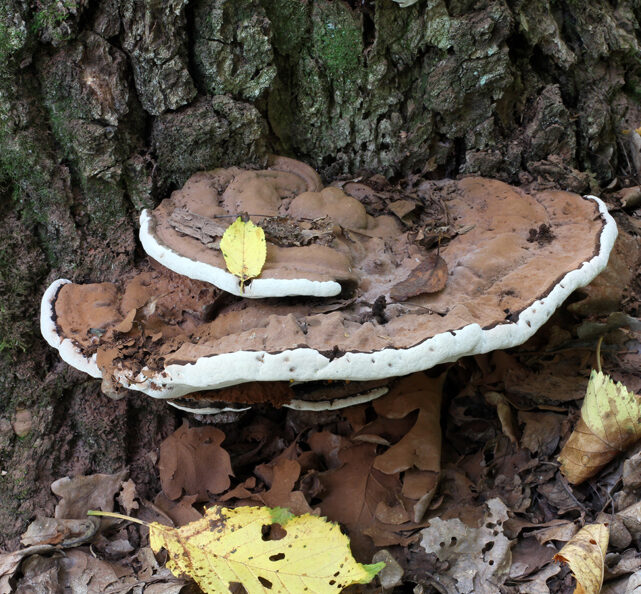
Ganonderma applanatum: Retrieved from URL
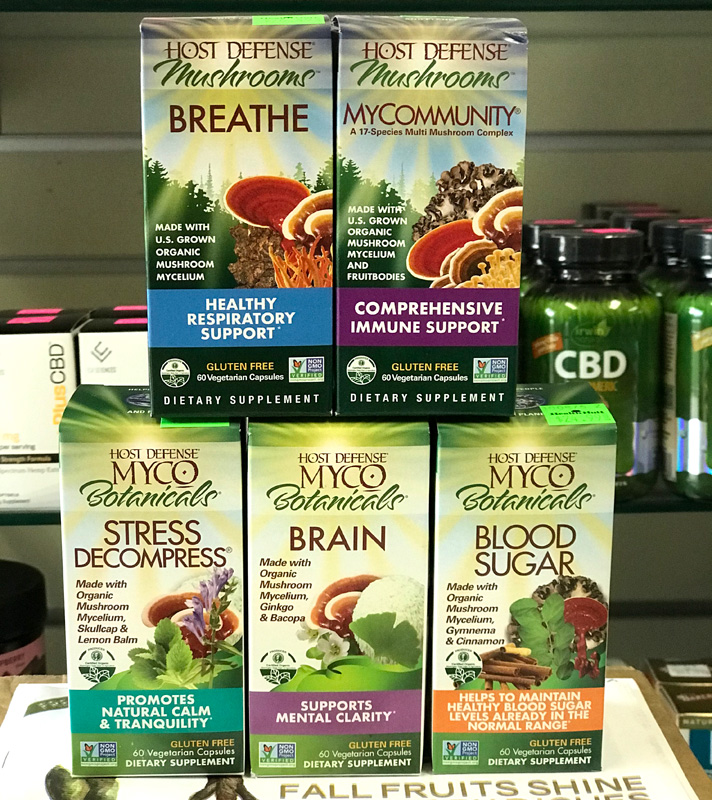
Turkey Tail (Trametes versicolor)
Turkey tail is bracket fungus. It is common throughout Michigan. (7) There is a very close look alike though – the false turkey tail (Stereum hirsutum). The difference lies in the pores! Turkey tail has a porous underside, while the close imposter has a smooth underside. (6) Other lookalikes have teeth or gills.
Turkey Tail is packed with antioxidants and contains two polysaccharides (PSP and PSK) that have been found to have very strong immunological value – so Turkey Tail is great for our immune system. (11) Turkey Tail also contains prebiotics, the nutrient probiotics need to flourish. In particular, PSP mentioned above also acts as a prebiotic. (11) Additionally, many herbalists believe turkey tail is more effective liver support than any packaged cleansing or detox products! (11)
Paul Stamets has been quoted, “Turkey tail mushrooms have been used to treat various maladies for hundreds of years in Asia, Europe, and by indigenous peoples in North America. Records of turkey tail brewed as medicinal tea date from the early 15th century, during the Ming Dynasty in China.” Host Defense promote Turkey Tail for immune support. It is found in the Liver, Myco Shield and MyCommunity products. It is available on its own as well.
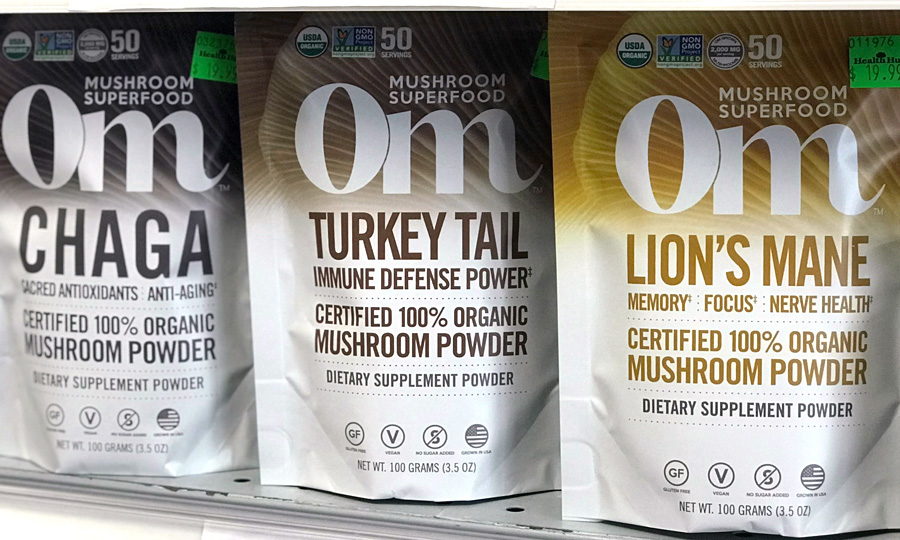
Conclusion
Mushrooms have a lot to offer us and we are still learning more about them. The fruiting body of mushrooms themselves are rather indigestible. Mushroom products are mostly water and alcohol extracts or mycellium.
Though we can find mushrooms in the wild, going for cultivated mushroom and mushroom mycellium products can be a more sustainble way to consume certain mushrooms rather than everyone going out looking for, say, Chaga, which take a long time to get to a substantial time. It is also important to consult an experienced mushroom forager before consuming anything you find in the wild as eating wild mushrooms can have serious consequences.
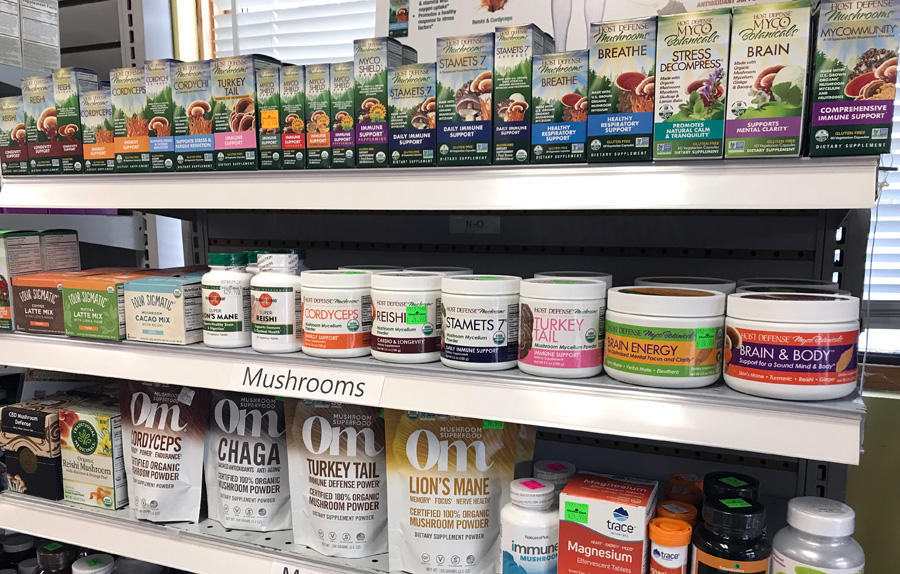
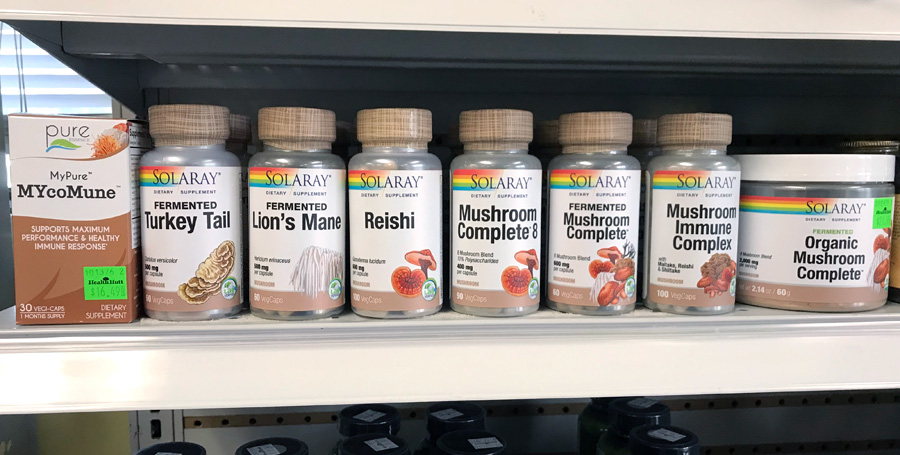
Sources
- “Chaga mushroom: Nine potential health benefits”, Herbs and Helpers, Accessed Oct 27, 2021. https://www.herbalmedicineuk.com/chaga-mushroom-nine-potential-health-benefits/
- Martin Arcimovic. “Birch polypore is a medicinal (from tree to tea)”, Mushroom Grove. Accessed Oct 27, 2021. https://mushroomgrove.com/birch-polypore/
- Teegaurden, Ron. (1998). The Ancient Wisdom of the Chinese Tonic Herbs. Warner Books.
- “Ganoderman Applanatum”, Midwest American Mycological Information, Accessed Oct 27, 2021. https://midwestmycology.org/ganoderma-applanatum/
- Hutchison, M. (2021). Mushrooms for Wellness. Mountain Rose Herbs Journal. 2, 69-73.
- Alessandra Bergamin. “How Can You Tell a True Turkey Tail from an Imposter?”, Bay Nature, Nov 28, 2013. https://baynature.org/2013/11/28/can-tell-true-turkey-tail-imposter/
- “Trametes-Versicolor”, Midwest American Mycological Information, Accessed Oct 27, 2021. https://midwestmycology.org/trametes-versicolor/
- “Hericium Erinaceus”, Midwest American Mycological Information, Accessed Oct 27, 2021. https://midwestmycology.org/hericium-erinaceus/
- Grunewald, F. et al. (2018). Effects of Birch Polypore Mushroom , Piptoporus betulinus (Agariocmycetes), the “Iceman’s Fungus”, on Humane Immune Cells’. Int J Med Mushrooms. 20(12), 1135-1147. doi: 10.1615/IntJMedMushrooms.2018029154.
- Spelman, K. et al. (2018). Neurological Activity of Lion’s Mane (Hericium erinaceus). Journal of Restorative Medicine.6:19-26. https://doi.org/10.14200/jrm.2017.6.0108
- “Turkey Tail Mushroom Benefits, Usage, and Side Effects,” Gaia Herbs, Accessed Oct 27, 2021. https://www.gaiaherbs.com/blogs/seeds-of-knowledge/turkey-tail-mushroom-benefits
The information provided on this site is intended for your general knowledge only and is not a substitute for professional medical advice or treatment for specific medical conditions. You should not use this information to diagnose or treat a health problem or disease without consulting with a qualified healthcare provider. Please consult your healthcare provider with any questions or concerns you may have regarding your condition.
